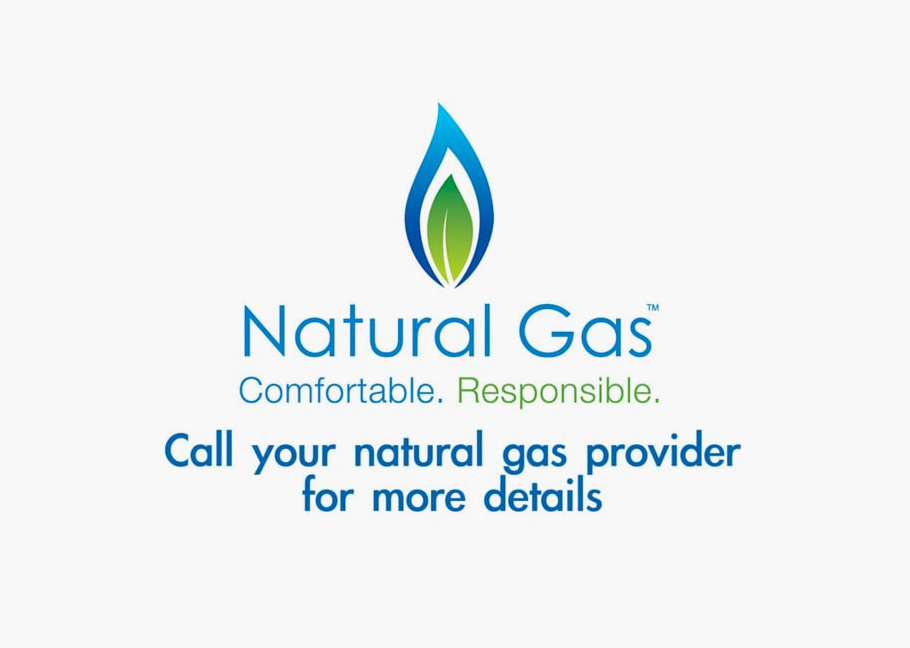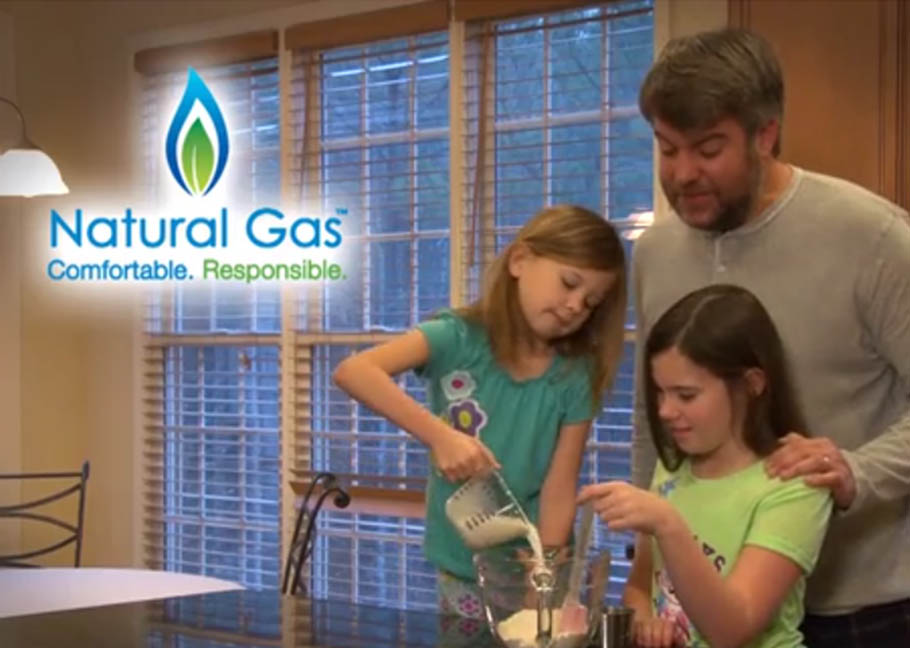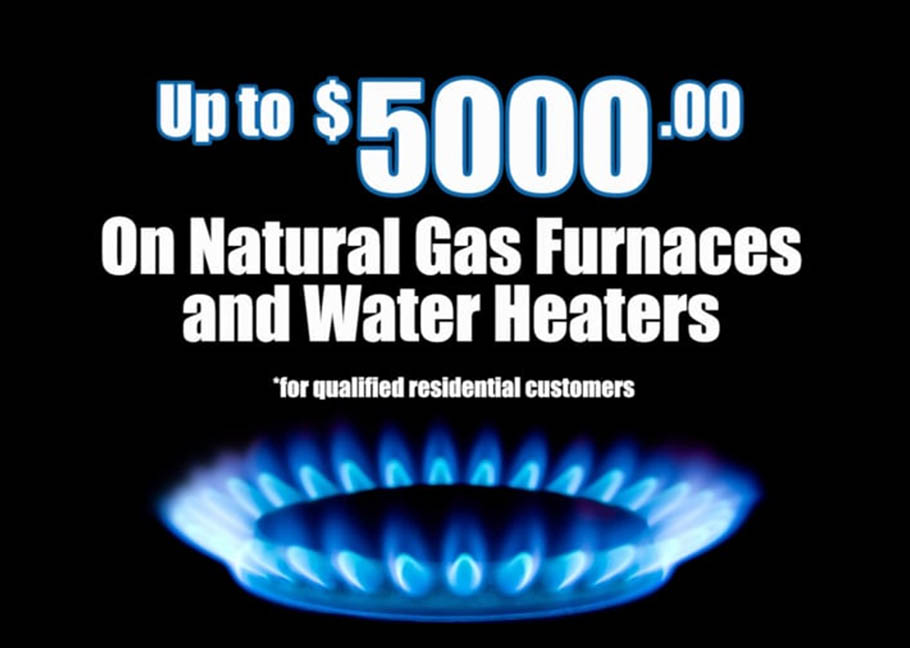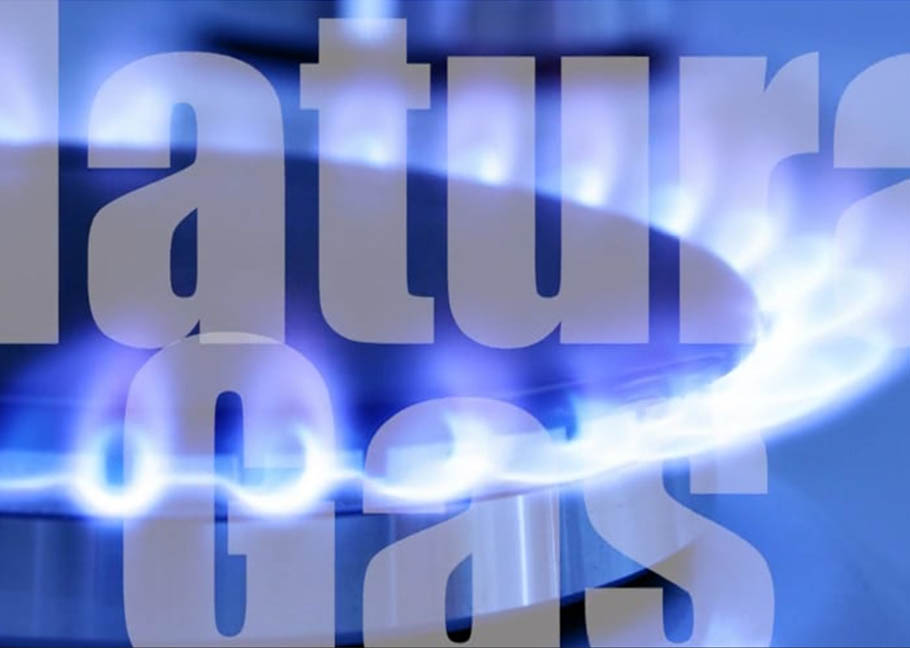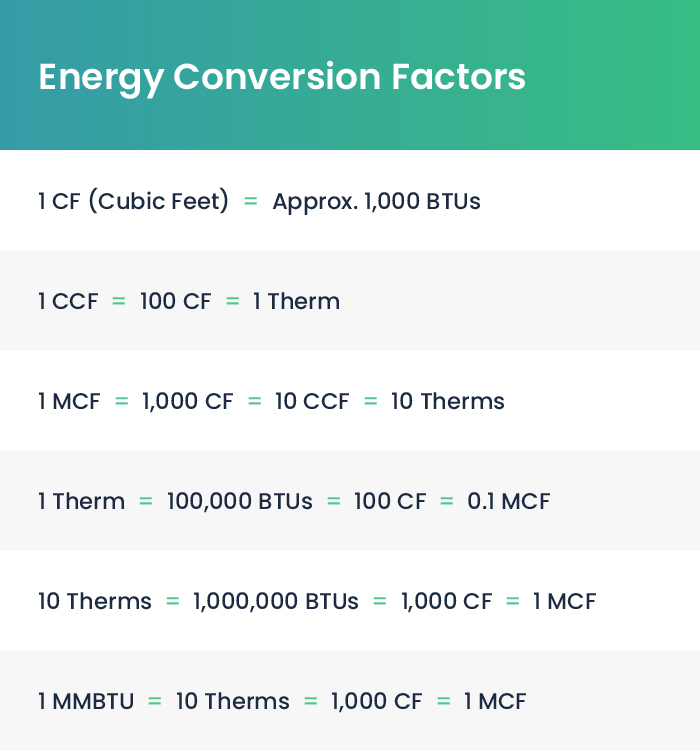Your One Stop Shop for all of Your Natural Gas Needs
It’s our goal at Municipal Gas Authority of Georgia to provide important facts our current customers and future customers might need in order to make informed decisions for their families and/or businesses. We’ve compiled a list of resources that will help educate you more about our services as well as provide some information about the natural gas industry as a whole.


Financing
Main Street On-Bill Finance
The Main Street On-Bill Finance is a program to assist customers by providing financing options toward the installation of energy efficient natural gas applications. Eligibility is based on residence and payment history. The Gas Authority can provide assistance and resources to help you launch the program, implement processes and provide marketing materials to promote the program.
Training
Campus at Southern Gas Association
If you are logging into the Campus for the first time, proceed to Login at the upper right of the Campus home page, this will open a new screen, select “New Customer, Click Here”. Complete the form and under Company Name, search for Municipal Gas Authority of Georgia, then submit to create your unique login and password. Training, broadcasts and webinars can be accessed by searching in the “Course Finder” or browsing the Content Library by categories. If you have any questions or problems accessing the SGA Campus, contact Yolanda Santiago White at 678-819-0926.

FAQs
Is there a gas pipeline in my neighborhood?
If you are not sure if there is an established natural gas line in your neighborhood contact your local Municipal natural gas provider, the City in which you live, and they should be able to tell you if you do have a line in your neighborhood.
What should I do if I smell gas?
If you smell rotten eggs, leave the area and call 911 or your local emergency response team’s number (fire, police, utility, etc.)
How many homes in the U.S. use natural gas?
More than half of all the homes in the United States use natural gas – almost 66 million families.
Is the use of natural gas good for the U.S. economy?
Natural gas comprises almost one-fourth of all primary energy used in the U.S. and is directly linked to jobs and economic health. The natural gas industry supports the employment of more than 4 million Americans in all 50 states. (published by AGA)
How efficient is natural gas?
The direct use of natural gas in America’s homes and businesses achieves 91% energy efficiency. Natural gas companies in the U.S., on average, connect one customer every minute to this efficient energy delivery system.
How dependable is natural gas?
Because the natural gas system is underground, outages are rare.
Is natural gas safe?
According to the U.S. Department of Transportation, pipelines are the safest form of energy transportation. Safety is the number one priority for America’s natural gas utilities. (published by AGA)
How much natural gas does the United States have, and how long will it last?
The U.S. Energy Information Administration estimates that there were about 3,374 trillion cubic feet (Tcf) of technically recoverable resources of dry natural gas in the United States. At the rate of U.S. dry natural gas consumptionof about 30 Tcf per year, the United States has enough natural gas to last more than 100 years. The actual number of years will depend on the amount of natural gas consumed each year, natural gas imports and exports, and additions to natural gas reserves. Technically recoverable reserves consist of proved reserves and unproved resources. Proved reserves of crude oil and natural gas are the estimated volumes expected to be produced, with reasonable certainty, under existing economic and operating conditions. Unproved resources of crude oil and natural gas are additional volumes estimated to be technically recoverable without consideration of economics or operating conditions, based on the application of current technology. (published by eia.gov)
What are natural gas heat pumps?
Natural gas heat pump appliances are emerging technologies that can significantly increase efficiencies and achieve greenhouse emissions reductions in the residential and commercial sectors. Natural gas heat pumps for heating and cooling buildings are commercially available today and can achiever efficiencies as high as 130 percent. Research, development, and testing is underway to introduce the natural gas residential heat pump water heater by 2023. Innovative technologies like natural gas heat pumps help lower energy costs for consumers and businesses and reduce greenhouse gas emissions. Carbon emissions from the average natural gas home decline 1.2 percent per year.
What types of Consumer Energy Assistance Programs are available?
Several state and local agencies provide energy assistance dollars to offset some energy costs for qualifying customers. Click the links below to learn more about these programs.
Department of Family and Children Services
Where can I find information on Self-Directed Energy Conservation?
When it comes to useful information on using and saving energy, there are many sources of very useful information. Listed below are informative websites on forecasted energy prices, detailed home energy conservation strategies and energy-efficient home improvement materials.
These sites can help utilities and their customers prepare for the winters ahead:
www.homeenergysaver.lbl.gov : This DOE site enables consumers to use a “Do it Yourself Home Energy Audit,” calculate energy use and identify the best ways to save both energy and money. Key in your zip code and receive instant estimates of your energy use, or take a quiz that helps customize your home’s profile.
https://www.energy.gov/eere/office-energy-efficiency-renewable-energy : DOE’s Office of Energy Efficiency and Renewable Energy provides technical assistance, lists of energy consultants, conservation tips and other information and programs to promote energy efficiency and renewable energy.
http://www.energystar.gov/ : This Environmental Protection Agency site enables consumers to gauge the energy efficiency of many of their home appliances and to research EPA-sponsored Energy Star energy-efficient appliances.
www.ase.org : The Alliance to Save Energy has posted some tips on its website to help consumers avoid “$ticker $hock” this winter.
www.atlantagaslight.com : Atlanta Gas Light provides energy audits with recommendations for how you can improve the energy usage in your home.
www.aga.org : The American Gas Association website is an invaluable resource for understanding the benefits and availability of clean, safe, reliable natural gas energy. Where can I find product information on insulation and weatherization supplies? Here are some resources for insulation and weatherization supplies and products.
www.ahrinet.org : Air-Conditioning, Heating, and Refrigeration Institute
www.aham.org : Association of Home Appliance Manufacturers
www.nahb.com : National Association of Home Builders
Conversion Tables
Gas Pricing
Commodity Price Updates
NYMEX futures and strip prices with graphs, cash prices for specific pipelines, historical spot market prices, as well as alternate fuel comparisons.
Commodity Fundamentals Updates
Weather and storage data, as well as a weekly market commentary.
The above link provides Commodity Market Prices for NYMEX. Price quotes for these commodities are delayed at least 30 minutes as per exchange requirements.
Glossary
A
AGENT
A legal representative of buyers, sellers or shippers of natural gas in negotiation or operations of contractual agreements.
B
BACKHAUL
Transportation with the receipt point downstream of the delivery point. The gas does not actually flow upstream but does benefit the pipeline system by increasing delivery capacity. For this reason, backhauls are rarely curtailed, even in peak periods.
BASE LOAD
Amount of gas used on a day with no heating requirements (0 Degree Days).
BASE PRESSURE INDEX
A device which continuously and automatically compensates to correct gas volume at operating pressure to volume at base pressure, without regard for any correction for temperature.
BLANKET CERTIFICATE
A FERC authorization covering multiple transactions under a single certificate.
BROKER
A company that brokers gas, without ever taking title to the gas. The broker receives a fee for matching a buyer and a seller of gas.
BTU, DRY
Heating value contained in a cubic foot of natural gas measured and calculated free of moisture content. Contractually, dry may be defined as less than or equal to seven pounds of water per one million cubic feet.
BY-PASS
Method by which a customer gains access to direct deliveries of gas from a supplier other than its traditional supplier. Distributors may “by-pass” their pipeline supplier by building interconnects with other pipelines; industrial customers may “by-pass” their local distributor by tapping directly into an interstate pipeline.
C
CAPACITY BROKERING
Process by which a party sells or rents firm capacity it holds on a pipeline.
CCF
100 Cubic Feet.
CERTIFIED CAPACITY
The total certified capacity of a pipeline is the sum of the increments authorized in various certificates by the FERC. If a particular construction program will change the transmission or storage capacity of the pipeline, the certificate filing must explain the change.
CITY GATE
The physical location where gas is delivered by a pipeline to a local distribution company (LDC).
COMPRESSED NATURAL GAS (CNG)
Natural gas in high-pressure surface containers that is highly compressed (though not to the point of liquefaction). CNG is used extensively as a transportation fuel for automobiles, trucks and busses in some parts of Italy, New Zealand, and in Western Canada.
CONFIRMED NOMINATION (Scheduled Quantity)
An agreement by a seller to deliver/cause delivery or a transporter to receive and deliver a specific quantity of gas for a specified period at various points under a Sales or Transportation Agreement or for all contracts at one specific point. The confirmed nomination is in response to a purchaser’s or shipper’s nomination.
CUBIC FOOT
The amount of gas required to fill a volume of one cubic foot under standard conditions of temperature, pressure and water vapor. Roughly, one cubic foot equals one thousand BTU’s.
CURTAILMENT
Reduction of gas deliveries because of a shortage of supply or because demand for service exceeds a pipeline’s capacity. Usually there is a hierarchy of customers, in which some may be required to partially or totally cut back takes of gas before others. Industrial users, for example, are usually curtailed before service to residential users.
D
DEGREE DAY DEFICIENCY (DDD)
A unit that represents one degree of deviation from 65o in the mean daily outdoor temperature and that is used to measure heat requirements. Example: If high temperature is 50o F and low temperature is 26o F, then the mean temperature is 38o F and the DDD is 27 (65o minus 38o).
DEMAND CHARGE
The portion of a gas charge that reflects a customer’s contract requirements. Usually a set monthly fee, based on contract requirements.
DISCOUNTS
Reduced transportation rates offered to capture alternate fuel load, may be across the board or selective.
DISPLACEMENT
The method by which equivalent volumes of gas are delivered from one point on a pipeline’s system to another point without a continuous flow of molecules from the first point to the second. “Backhauls” are one form of displacement.
E
END USER
Any entity which is the ultimate consumer for natural gas. An end-user purchases the gas for consumption but not for resale purposes.
F
FERC (Federal Energy Regulatory Commission)
The federal agency created in 1977 to regulate, among other things, interstate wholesale sales and transportation of gas at “just and reasonable” rates. Formerly the Federal Power Commission.
FIRM LOAD
High priority load that must be served on the peak day.
FORCE MAJEURE
An “Act of God” or unexpected and disruptive event beyond the control of buyer or seller which interferes with a party’s ability to perform under a contract. A force majeure event will typically relieve a party from a contract obligation.
G
GAS DAY
A period of twenty-four (24) consecutive hours commencing at a specified hour on a given calendar day and ending at the same specified hour on the next succeeding calendar day.
GAS PLANT
Any plant which performs one of the following functions: removing liquefiable hydrocarbons from wet gas or casinghead gas (gas processing); removing undesirable gaseous and particulate elements from natural gas (gas treatment); removing water or moisture from the gas stream (dehydration).
H
HINSHAW PIPELINE
Refers to a section of the Natural Gas Act that exempts from FERC regulation the transportation and sale for resale of interstate natural gas provided that it is received within the boundaries of a state, it is consumed within the state, and the facilities and rates are regulated by the state.
I
IMBALANCE
A. Receipt Point Imbalance – When a producer delivers a quantity of gas that is larger or smaller than the quantity nominated by the shipper.
B. Delivery Point Imbalance – When a pipeline delivery point takes a quantity of gas less than the quantity nominated by the shipper, also known as a city bank.
C. End-User Imbalance – When an end-user has gas transported to the LDC’s citygate and that quantity is larger or smaller than the end-user’s actual use for the period. Depending upon the LDC’s policies, these may be offset in another manner such as sales gas for underdeliveries.
D. Pipeline Imbalance – The total imbalance between a pipeline and a shipper equal to the algebraic sum of the Receipt Point Imbalance and the Delivery Point Imbalance.
INDEX PRICE
A price for natural gas delivered to a specified point for a specified period that is based on actual transactions. A gas contract may use an index based formula to determine the price of gas sold.
INTERRUPTIBLE LOAD
Load used by customers with alternate fuel who have elected to purchase under the optional rate schedule. This load may be curtailed at the gas company’s option to lower the amount of gas during a particular period.
INTERSTATE GAS
Gas transported through interstate pipelines to be sold and consumed in states other than the one in which it was produced.
INTRASTATE GAS
Gas sold and consumed in the state where it was produced and not transported in interstate pipelines.
J
JURISDICTIONAL
That portion of the pipeline’s activities subject to regulatory oversight.
L
LANDFILL GAS
Gas produced by aerobic and anaerobic decomposition of a landfill generally composed of approximately 55% methane and 45% carbon dioxide, sometimes refined with membrane methods to eliminate the carbon dioxide.
LATERAL
A pipe in a gas distribution or transmission system which branches away from the central and primary part of the system.
LOAD FACTOR
The rates of the average day to the peak day. A peak load of twice the average results in a load factor of 50%. If the load is the same each day of the period, the load factor is 100%.
LDC
Local Distribution Company – A company engaged in the sale and distribution of natural gas for ultimate consumption.
LNG
Liquefied Natural Gas.
LPG
Liquefied Propane Gas.
M
MARKETER
A company, other than a pipeline or LDC, that buys and resells gas for a profit. Marketers also perform a variety of related services associated with moving their product to buyers, including arranging transportation, monitoring deliveries and balancing. An independent marketer is not affiliated with a pipeline, producer or LDC.
MARKET OUT
A price clause in a producer/pipeline contract that allows a pipeline to adjust the price to be market responsive.
MCF
One thousand cubic feet. The average domestic user consumes 100-200 Mcf annually. Very roughly, 1 Mcf = 1 MMBtu = 1 Dth.
MEAN TEMPERATURE
Sum of the daily high and low temperatures divided by two.
METHANE (CH4)
The first of the paraffin series of hydrocarbons. The chief constituent of natural gas. Pure methane has a heating value of 1012 Btu per cubic foot.
MMBTU
1,000,000 BTU, 1 Decatherm, 10 Therms.
MMCF
One million cubic feet; 1,000 MCF; 10,000 CCF.
N
NATURAL GAS
Gaseous hydrocarbons – principally methane – found in porous geological formations.
NATURAL GAS ACT OF 1938 (NGA)
Federal law giving the FPC/FERC jurisdiction over: 1) Interstate transportation of gas; 2) The sale in interstate commerce for resale of gas; and 3) companies that do either of those things.
NATURAL GAS POLICY ACT OF 1978 (NGPA)
Enacted in an era of concern over energy shortages and increasing reliance on oil imports, this federal law adopted a phased-in deregulation for “new” natural gas, or gas discovered after 1977 (“old” gas was to remain regulated) and incentive prices for certain types of natural gas to encourage increased exploration and production. Also established an incremental pricing surcharge to some industrial users. Total decontrol may come in this session of Congress, given the strong bipartisan support for a “simple” decontrol bill introduced by Democrat Philip Sharp from Indiana, Chairman of the House Energy and Power Subcommittee. His bill decontrols gas as contracts expire or are renegotiated, with final decontrol of all prices set for January 1, 1993.
NETBACK PRICING
A contractual arrangement in which the price of gas at the wellhead is based on what it sells for at the burner-tip. The market price is defined as the burner-tip price, less transportation and distribution costs, including the profit margins of pipelines and distribution and distribution companies.
NOMINATION
A request for a physical quantity of gas under a specific purchase, sales or transportation agreement or for all contracts at a specific point. A nomination will continue for specified number of days or until superseded by another service request for the same contract.
NON-JURISDICTIONAL
That portion of the pipeline’s activities that are unregulated.
NON-PERFORMANCE
Failure to deliver gas under an interruptible contract in the spot market.
NOTICE OF INQUIRY (NOI)
Procedure used by the Federal Energy Regulatory Commission to gather information on a specified industry issue. Normally calls for comments from all interested parties and in some cases, reply comments and/or public hearings.
NOTICE OF PROPOSED RULING (NOPR)
A proposal by the FERC to change its rules. Sometimes preceded by a Notice of Inquiry. Normally calls for comments from all interested parties and in some cases, reply comments and/or public hearings. A NOPR may or may not result in a final rule.
O
ODORANT
Any material added to natural or LP gas in small concentrations to impart a distinctive odor. Odorants in common use include various mercaptans, organic sulfides, and blends of these. Compare MERCAPTANS.
OPERATOR
An entity which manages and controls a facility and the gas moving through that facility. The operator performs the day to day operations, contract scheduling, communications, and routinely monitors, tests, and repairs facilities and/or measurement equipment. The operator is not necessarily the owner. A producer operator operates a well. A transportation operator operates a gathering system, pipeline or legal distribution company. A plant operator operates a processing or extraction plant. A consumer operator operates an end use facility.
ORDER 436
A FERC rule promulgated in October, 1985, establishing a voluntary, open-access system of transportation. The major components of the rule are: an expedited abandonment policy; blanket certification and self-implementing non-discriminatory transportation; and optional, expedited certificates for new pipeline projects. Order 436 transportation included an option for the pipeline’s firm customers to reduce their contract demand for sales volumes over a five-year period. Transportation was also to be allotted on a “first come, first served” basis. This order has now been replaced by Order 500.
ORDER 500
An interim rule on open-access transportation, replacing Order 436, after it was vacated by the D.C. Circuit Court of Appeals in August, 1987. In the AGD -v- FERC decision, the Court did not order FERC to rewrite the open-access rules, but criticized the Commission for failing to explain how the order would relieve interstate pipelines of high take-or-pay burdens. Order 500 embodies all the elements of Order 436 with three additional features: forcing producers to credit transportation volumes against accruing take-or-pay (cross-crediting); allowing pipelines to directly bill customers for part of past take-or-pay charges; and providing pipelines with an opportunity to fashion new gas charges to take care of future take-or-pay (which have since been called gas inventory holding charges or supply reservation fees).
ORIGIN
See Source.
OVERRUN
Volumes of gas taken above the correct maximum, may be authorized or unauthorized. Unauthorized overruns can result in penalties charged by the pipeline.
P
PEAK DAY
Maximum sendout occurring during a 24-hour period.
PEAK HOUR
Maximum sendout during a one-hour period.
PEAK SHAVING
Supply fuel gas for distribution systems from an auxiliary source (of limited supply, higher cost) during periods of maximum demand when the primary source is not adequate.
PIPELINE
An entity engaged in the sale and transportation of natural gas in intrastate or interstate commerce.
PIPELINE CAPACITY
The maximum quantity of gas that can be moved through a pipeline system at any given time based on existing service conditions such as available horsepower, pipeline diameter(s), maintenance schedules, regional demand for natural gas, etc.
PIPELINE DAY
The 24-hour period designated by each pipeline company for the operation of its pipeline system.
PRESSURE BASE
The factor for pressure used in determining a gas quantity, expressed in terms of pounds of pressure per square inch that the gas would exert on the walls of a container of one cubic foot volume.
PRIOR PERIOD CORRECTION
Restatement of a production month’s measurement allocation or contract quantities in subsequent months.
PROCESS GAS
Gas use for which alternate fuels are not technically or economically feasible (applications requiring precise temperature controls or flame characteristics.
PROCESSING PLANT
See Gas Plant.
PRODUCER
Any party owning, controlling, managing, or leasing any gas well and/or any party who produces in any manner natural gas by taking it from the earth or waters.
PTR – (Plant Thermal Reduction)
The BTU equivalent of the liquid products extracted from the producer’s gas plus the portion of plant fuel necessary to extract those liquids, plant flare and other plant losses. When expressed as MCFs this is referred to as Plant Volume Reduction or PVR.
PVR – (Plant Volume Reduction)
See PTR.
R
RATE BASE
The investment value established by a regulatory authority upon which a utility is permitted to earn a specified rate of return.
RELEASED GAS
Gas previously contracted and dedicated between producers/brokers and a transporter company which, through mutual agreement between the parties, was thereafter “released” from contract and ultimately made available for purchase by third parties.
RECEIPT POINT
A point at which gas enters a transporter’s system, may be a wellhead, an interconnect or a processing plant tailgate.
RESERVATION FEE
Similar to a demand charge.
ROYALTY
The amount paid to interest owners. In gas and oil operations, usually based on a percentage of the total production.
S
SENDOUT
Total volume of gas supplied from all sources for a particular period.
SHIPPER
A legal entity who contracts with a transporter to move gas over the transporter’s system.
SHRINKAGE
See Fuel.
SHUT-IN WELL
A well that has been completed but is not producing. (It may be shut-in for tests, repairs, or to await construction of gathering lines.) In recent years wells have been shut-in when buyers refused to take the gas, or when producers decided that the market price of gas was not sufficient to meet operating costs.
SOURCE
The field or block in which the well is located.
SPECIAL MARKETING PROGRAMS (SMP’s)
A program launched by FERC (now ruled illegal by the courts) that allowed producer gas–previously committed to a pipeline or distribution company–to be released and sold at market prices to an end-user or distributor whose alternative gas or fuel sources enabled it to switch suppliers rather than pay the higher prices generally charged by the pipeline. FERC intended the SMP’s to allow gas producers to make price concessions and market gas that would otherwise be shut-in, while relieving pipelines of take-or-pay liabilities. The D.C. Circuit found that SMP’s discriminated against “captive” customers.
SPOT MARKET
A market characterized by short-term, typically interruptible or best efforts contracts for specified volumes of gas.
SPOT SALE
Short term sale of gas to an end-user, LDC, or pipeline for which the duration varies.
STORAGE
Subsurface facilities used to store gas which has been transferred from its original location. Usually consists of natural geological reservoirs like depleted oil or gas fields or water-bearing sands sealed on top by an impermeable cap rock.
STORAGE GAS
Supplemental sources of gas available from pipeline supplier. Limitations are set on maximum daily quantities as well as seasonal quantities that may be withdrawn.
SYSTEM SUPPLY
Purchases of natural gas for the purchaser’s own system supply requirements.
T
TAKE OR PAY
The clause in a gas supply contract which provides that for a specific period, a specific minimum quantity of gas must be paid for, whether or not delivery is accepted by the purchaser. Some contracts contain a time period in which the buyer may take later delivery of the gas without penalty.
TAILGATE
The outlet side of a gas plan that connects to the pipeline.
TARIFF
A gas company schedule detailing the terms, conditions and rate information applicable to various types of natural gas service. This document is filed with and approved by FERC or a state regulatory body.
TCF
Trillion cubic feet; 1,000 BCF; 1 Billion MCF.
TEMPERATURE SENSITIVE LOA
That portion of the total load used for heating which is temperature sensitive. During cold periods this is the largest part of the sendout.
THERM
100,000 BTU.
311 TRANSPORTATION
Self-implementing transportation under Order 436/500. Pipelines which provide 311 service must do so on a non-discriminatory basis, but have the ability to shut down 311 service across the board whenever they choose. For most pipelines, this has been the only open access service available.
7(c) TRANSPORTATION
Section 7(c) of the Natural Gas Act is FERC’s authority to issue certificates for transportation and sale-for-resale of gas in interstate commerce. It can do this individually, or generically (as in the various blanket certificate programs and Order 436/500). Today Section 7(c) transportation typically refers to orders approving specific transportation proposals for identified shippers and pipelines.
TRANSPORTATION AGREEMENT
An agreement between a shipper and transportation company which defines the terms and conditions of the transportation services and transportation transfer to be provided.
TRANSPORTER
A legal entity which has the capability of providing the service of transporting gas. Transporter includes gathering companies, pipeline companies and local distribution companies.
U
UNACCOUNTED FOR GAS
The difference between purchases and sales. It is caused by measurement errors, leakage, cycle billing and other differences.
UPSTREAM PIPELINE
The first pipeline to transport natural gas en route to an inter-connect point for delivery to another pipeline.
W
WACOG
Weighted Average Cost of Gas. Formula used by pipelines to determine the cost of gas underlying their sales rate.
WELLHEAD
The physical connection to the actual well supply. Frequently used to describe the pipeline receipt point, even if a gathering system is used.
WIND CHILL FACTOR
Equivalent temperature of still air for a given temperature and wind speed.
WORKING INTEREST OWNER
The interest in a mineral property or serves which entitle the owner to the production from the property, usually subject to a royalty and sometimes to other non-operating interests. A working interest permits the owner to explore, develop and operate the property.
Links
General Information Sources
Natural Gas Email Discussion Group »
Associations
North American Energy Standards Board (NAESB) »
Interstate Natural Gas Association of America (INGAA) »
Transmission Companies
TRANSCONTINENTAL GAS PIPELINE COMPANY, LLC. »
Texas Eastern Transmission Company (Enbridge) »
Algonquin Gas Transmission Company (Enbridge) »
Distribution Companies
Appliances
Directories
EnergyOnline: Information on
Energy Industry »
Alternative Fueling Station Locator »
Georgia Associations
Georgia Municipal Association »
Association County Commissioners of Georgia »
Cities & Counties
Carl Vinson Institute of Government »
State Government
Georgia Public Service Commission »
Dept. of Natural Resources Home Page »
Economic Development
Utilities
Thomasville Utilities Services »
Oglethorpe Power Corporation »
United States Government
Energy Information Administration »
FedWorld Information Network »
Federal Energy Regulatory Commission »
News & Media
Access Atlanta – Atlanta Journal Constitution »
Weather
National Centers for Environmental Information »

